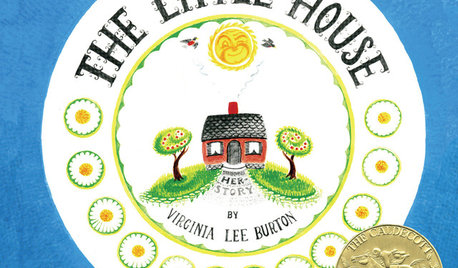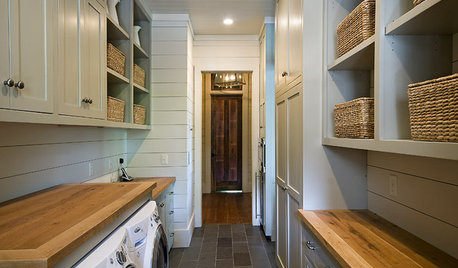Excited about Big Mama Lima Beans : ? about setting up support
perrynewbegining
12 years ago
Related Stories

GARDENING FOR BIRDSWhat to Know About Birds Nesting in Your Yard
Learn how to observe, record data and help ornithologists with NestWatch’s citizen science project understand bird trends
Full Story
HEALTHY HOME12 Ways to Set Up Your Kitchen for Healthy Eating
Making smart food choices is easier when your kitchen is part of your support team
Full Story
LIFEThe Beautiful Thing About Dad's Chair
My father had his own spot in the house. His father had his own spot. Now I have mine
Full Story
BOOKS11 Great Children’s Books About Home (and 2 Honorable Mentions)
Homes come in many different shapes and sizes, and these kids’ books highlight the tallest, the smallest, the oldest and the silliest
Full Story
FURNITUREHow to Buy a Quality Sofa That Will Last
Learn about foam versus feathers, seat depth, springs, fabric and more for a couch that will work for years to come
Full Story
MOST POPULARWhat to Know About Adding a Deck
Want to increase your living space outside? Learn the requirements, costs and other considerations for building a deck
Full Story
GREEN BUILDINGWhat's LEED All About, Anyway?
If you're looking for a sustainable, energy-efficient home, look into LEED certification. Learn about the program and its rating system here
Full Story
HEALTHY HOMEWhat You Need to Know About Dust and How to Fight It
Breathe easier with these 10 tips for busting mites, dander and other microscopic undesirables
Full Story
WORKING WITH PROS10 Things Architects Want You to Know About What They Do
Learn about costs, considerations and surprising things architects do — plus the quick route to pinning down their style
Full Story
LIFE3 Ways to Get Unstuck — About Organizing, Decorating, Whatever
Break out of the do-nothing rut to accomplish your goals, whether at home or in other parts of your life
Full Story





jolj
zeedman Zone 5 Wisconsin
Related Professionals
Edmond Landscape Architects & Landscape Designers · Kapaa Landscape Architects & Landscape Designers · Middle River Landscape Architects & Landscape Designers · Arden-Arcade Landscape Contractors · Fountain Valley Landscape Contractors · Hicksville Landscape Contractors · Rio Linda Landscape Contractors · Salmon Creek Landscape Contractors · Solana Beach Decks, Patios & Outdoor Enclosures · Boston Decks, Patios & Outdoor Enclosures · Brentwood Decks, Patios & Outdoor Enclosures · Cape Coral Decks, Patios & Outdoor Enclosures · Medford Decks, Patios & Outdoor Enclosures · Minneapolis Decks, Patios & Outdoor Enclosures · Salisbury Decks, Patios & Outdoor Enclosuresdrloyd
jolj
perrynewbeginingOriginal Author
zeedman Zone 5 Wisconsin
drloyd
SoTX
zeedman Zone 5 Wisconsin